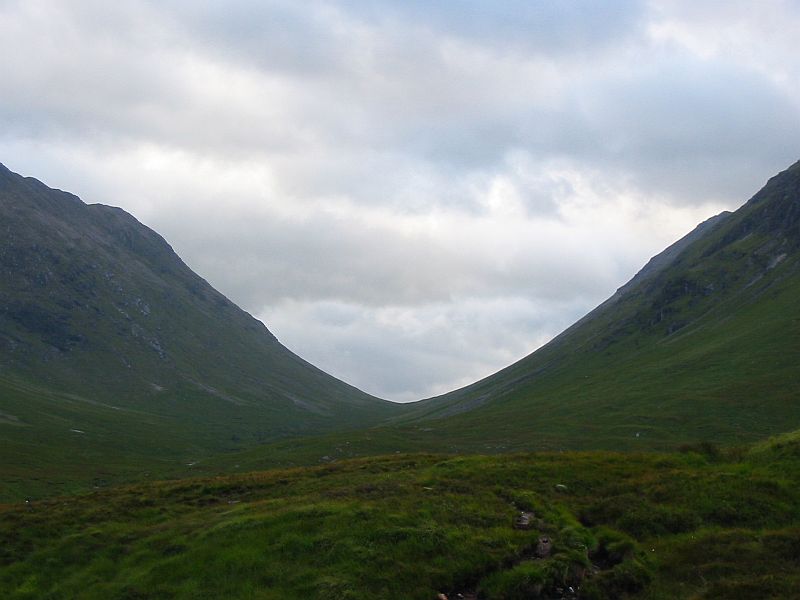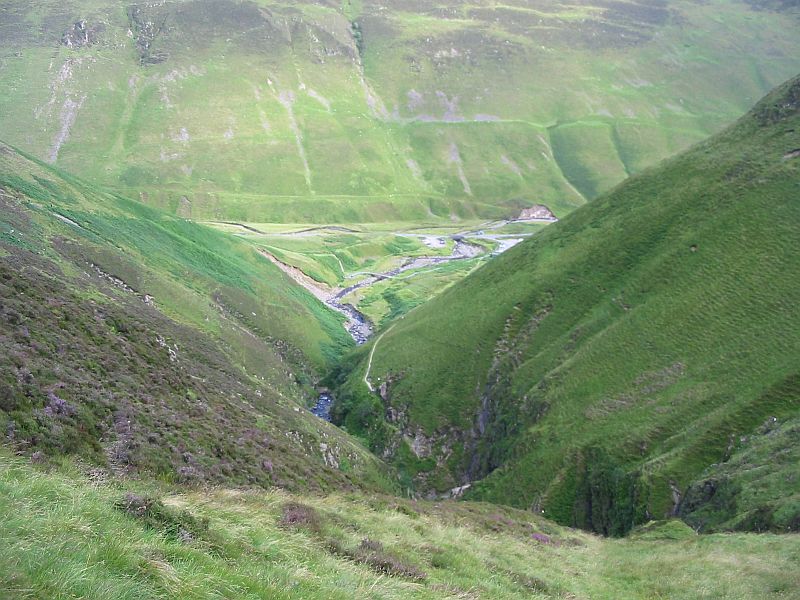We all have a general understanding what valleys are because they are so common landforms. They start forming wherever there is a downward surface irregularity which attracts running water (in most cases). Valleys tend to be exceptionally durable landforms — once they form, they tend to grow and grow.

U-shaped valley has been typically carved by a glacier. Photo taken in Scotland.
But not every hole is a valley. Valleys are long and they are sloping in one direction. There is typically river or stream running in the bottom of the valley but not always, some valleys are dry. Geologists often talk about U-shaped and V-shaped valleys. U-shaped valleys are typically carved by a glacier. Such landforms are very common in previously glaciated mountainous areas. V-shaped valleys are even more common because they are usually eroded by running water. This is not an exhaustive classification. There are more valley types. Tectonic valleys, for example, are formed by entirely different forces.

V-shaped valley has been typically eroded by running water. Photo taken in Scotland.
what are the different shapes of river valleys?
River valleys are generally V-shaped, at least young river valleys in uplands. Rivers in lowlands tend to have very broad valleys.
thanks for the info
How are v-shaped valley similar to U-shaped valley.